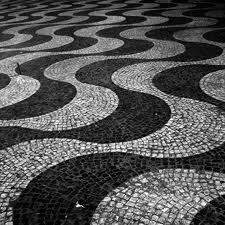Traditional Hand-made Portuguese Pavement, The Traditional Portuguese cobblestone patterns.

The Portuguese Pavements are a worthy heritage, a kind of decorative art mainly of Greek-Roman origin, is widely used to pave pedestrian areas,
streets, squares and other public or private spaces. Beside their functionality, the various decorative patterns made on the basis of chromatic contrast of stones give rise to works of significant aesthetic value, spread over every continent.
This method of paving has a high cost and reduced longevity in comparison with concrete-based or bituminous alternatives. They are, however, relatively easy to excavate (in order to access buried services) and reinstatement is almost invisible – not something that can be said for homogeneous surfaces that are left with unsightly patches as witness marks to previous interventions.
Once an activity performed by hundreds of craftsmen in Portuguese cities and villages, traditional paving is increasingly becoming restricted to conservation works or important architectural projects. Less abundant materials, dwindling numbers of craftsmen and criticism to its widespread use are forcing municipalities to consider other alternatives.
While São Paulo is currently reforming the sidewalks of its Paulista Avenue, one of the places in the city that has Portuguese pavement, and exchanging it for a more cheap and common type of pavement, in other Brazilians cities such as Rio de Janeiro it remains popular, nearly ubiquitous in the wealthier areas.





Comments are closed.